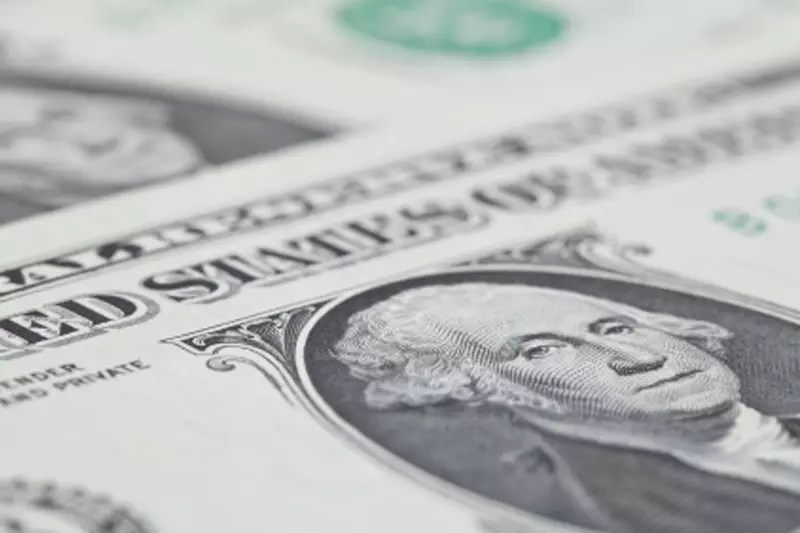In a landscape marked by uncertainty and fluctuating currency values, the U.S. dollar faced significant declines following statements from President Donald Trump regarding his stance on tariffs. Initially, market reactions were volatile, as investors grappled with the implications of potential new taxes on international trade. The decision to withhold immediate tariff implementations was welcomed by trade-sensitive currencies, providing a momentary sense of relief. It is crucial to unpack the various factors at play that influenced these market dynamics.
A notable aspect of this economic narrative is the decline in yields on 10-year Treasury bonds, which fell by six basis points to 4.56%. The hesitation by Trump to impose immediate tariffs alleviated investor fears of a sudden spike in inflation—a concern that could lead to aggressive monetary tightening by the Federal Reserve. The cautious tone surrounding trade policies prompted investors to reassess their outlook on the U.S. economy, fostering a more dovish sentiment.
During his inaugural address, President Trump outlined a robust agenda focused on issues such as immigration and energy policies. While the speech veered towards an expansionist foreign policy, including an ambitious goal of reclaiming the Panama Canal, it barely scratched the surface on tariff details. Analysts were left speculating about what this might mean for future trade agreements. The resulting memo directing trade agencies to evaluate persistent trade deficits served to amplify uncertainty rather than provide clarity on the path forward.
This indecision regarding tariff implementation hints at an approach of gradualism rather than a sudden crackdown—a sentiment echoed by Taylor Nugent, a senior markets economist at National Australia Bank. The indication of a measured approach became a critical factor that reverberated throughout trading floors. With the dollar falling 1.2%, this drop signified the most impactful loss since late 2023, placing the dollar index at a precarious position just above its support level of 107.70.
As traders responded to these developments, the euro experienced a notable rebound, climbing to $1.0421 and testing resistance at $1.0435. Given the European Union’s significant trade surplus with the United States, the euro was poised to gain amid a softer dollar. Similarly, the Chinese yuan saw a positive shift, reacting strongly to the absence of concrete tariff regulations. Having shed 1% overnight, the dollar eased to 7.2624 yuan, further reflecting the market’s relief amidst uncertainty.
For commodity-exporting nations like Australia and New Zealand, the dollar’s downturn translated into gains of approximately 1.5%. These currencies, deeply reliant on international trade, showed resilience in the face of fluctuating global dynamics. Conversely, the Japanese yen performed relatively steady against the dollar, dipping only marginally to 155.30. This stability was largely attributed to market speculation surrounding potential interest rate hikes from the Bank of Japan, demonstrating how intertwined global monetary policies can be.
The wavering confidence in the dollar led to a recalibration of investor expectations concerning Federal Reserve interest rates. Futures contracts began embedding expectations for a softer monetary policy, with rates projected to reach around 3.90% by December. The probability of a quarter-point rate cut as soon as May surged to approximately 50%.
Analysts at ANZ noted that a considerable amount of market data would need to be absorbed in the upcoming weeks. They suggest that if trade and immigration policies are implemented without severely disrupting supply chains or the workforce, investors may start to unwind their previous inflation concerns. This sentiment encapsulates the delicate balancing act that the market must undertake in response to evolving economic policies.
In a surprising turn of events, Trump’s supportive remarks towards cryptocurrencies led to Bitcoin reaching a peak of $109,071.86. However, this surge was followed by a retreat to $102,000 as trading resumed in Asia. This incident highlights a growing trend where traditional economic policies intersect with emerging digital assets, appealing to a new generation of investors who view cryptocurrencies as an alternative to conventional monetary systems.
The economic landscape is often subject to rapid changes based on political developments and international considerations. The interplay between fiscal policies, currency fluctuations, and investor sentiment reveals a complex tapestry that demands close attention from market participants. As we move forward, the trajectory of the dollar, interest rate adjustments, and the burgeoning cryptocurrency market will continue to be critical areas for scrutiny.


Leave a Reply